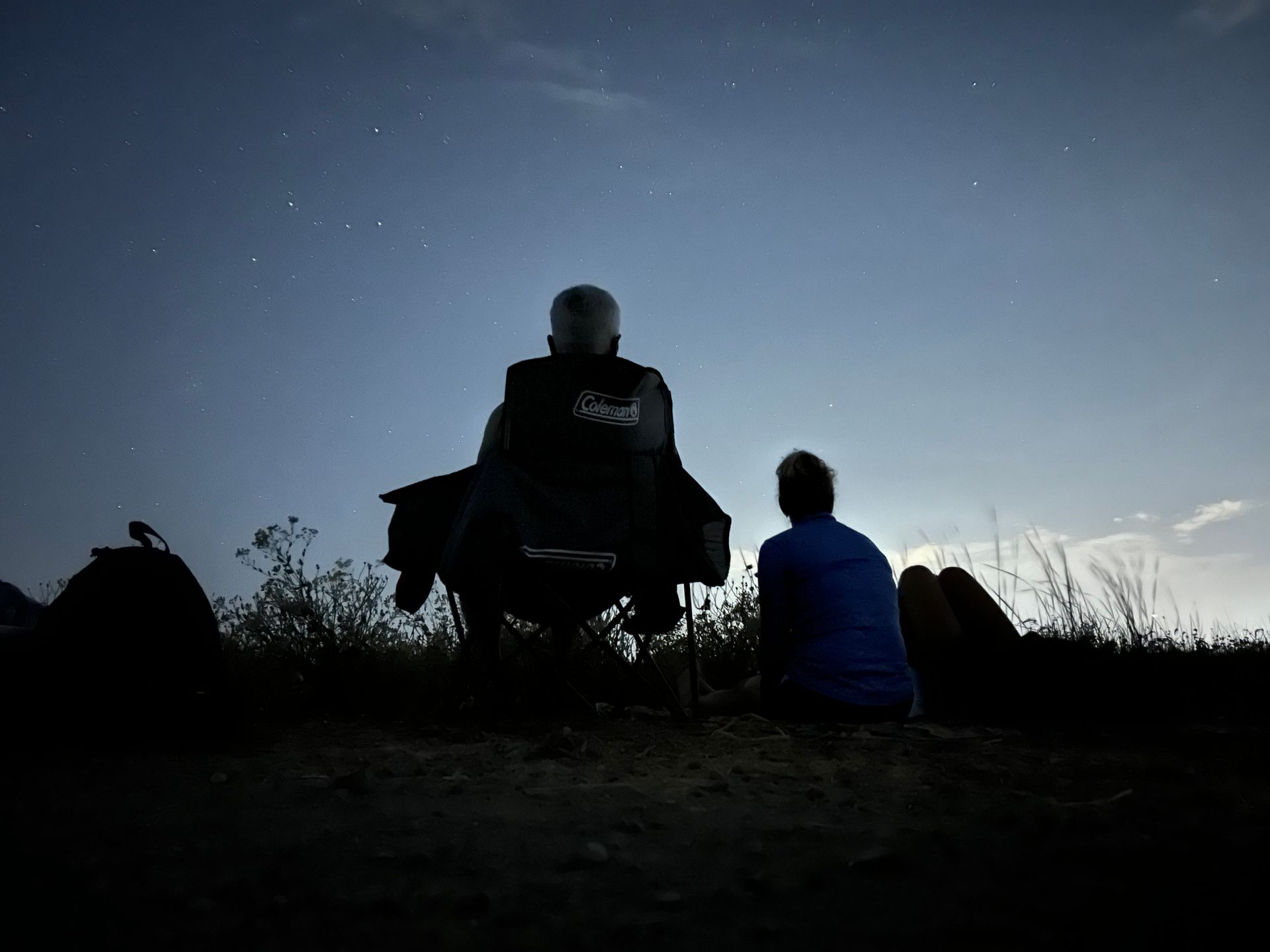Enjoying Outside - The Perseid Meteor Shower!

Meteor showers are sometimes called shooting stars but in actuality they aren’t stars at all. Meteors are actually rocks, dust and debris trailing behind an asteroid or a comet. Meteor showers happen when the Earth passes through a rubble field left behind by asteroids which are composed of metal or rock or comets which are primarily composed of dust, ice and/or rock. They happen annually as the Earth goes through its orbit and passes through the debris zone again year after year. The Perseid meteor shower is the result of the comet 109P/Swift-Tuttle (Swift-Tuttle). The Swift-Tuttle is a large comet with a nucleus that is 16 miles (!) across and was first discovered in 1862 by Lewis Swift and Horace Tuttle.
Often regarded as the prime meteor shower of the year, the Perseid regularly boasts 50 to 100 meteors each hour! This year the Perseid’s prime viewing period peaks on the evening of August 12th and into the early morning hours of August 13th when the Earth is moving into the debris zone. Unfortunately it also occurs during a Gibbous moon - a phase of the moon with more than half of the moon’s surface being lit up by the sun; this year it is predicted to be about 84% illuminated. The brightness of the moon will obscure the night sky making it more difficult to view some of the dimmer meteors. Regardless of the moon or other factors such as cloud cover, the meteor shower is best observed between midnight and the early dawn hours.
The Perseid meteor shower is known for being swift, bright and colorful leaving long wakes of light that track after them as they burn through the Earth’s atmosphere at 130,000 miles per hour. These vivid streaks are known as fireballs and travel at extremely high speeds with intense ionization resulting in especially radiant colors. These fireballs appear as various colors because of the different elements that they are composed of: red is a result of atmospheric gases and nitrogen, yellow/gold is iron, violet is calcium, orange is sodium and blue-green is magnesium. Primarily, the larger the piece of debris is, the more brilliant the meteor appears. If a meteor doesn’t burn up in the Earth’s atmosphere and makes it to the ground it is called a meteorite.
For those of us here in the Northern Hemisphere the Perseids are best observed in the early morning hours and luckily for us, they occur during the warm summer when it’s pleasant to sit outside looking up to the sky. For the best viewing opportunity find a rural spot that is far away from ambient light such as street or yard lights with a clear and unobstructed view of the open, night sky. Grab a lawn chair or blanket and a buddy to "oooh" and "ahhh" with and get comfy. Be patient and allow time for your eyes to adjust to the darkness and then begin looking for bright streaks of light across the dark sky. The Perseid meteor shower originates near the constellation Perseus for which they are named. To find it look to the northeast for the constellation Cassiopeia (look for a W or an M in the sky) and Perseus will be located below it. If you can’t find it don’t worry, you should be able to see the streaking lights all over the sky but again, the bright moon will most likely make viewing some of the dimmer meteors difficult. You may be able to see more of them before they peak due to the darker moon.
If you miss this one, keep an eye out for the Geminids meteor shower which peaks in mid-December!!
-Kristie Ehrhardt (kehrhardt@tuleyome.org)
Tuleyome Land Conservation Program Manager
RECENT ARTICLES






